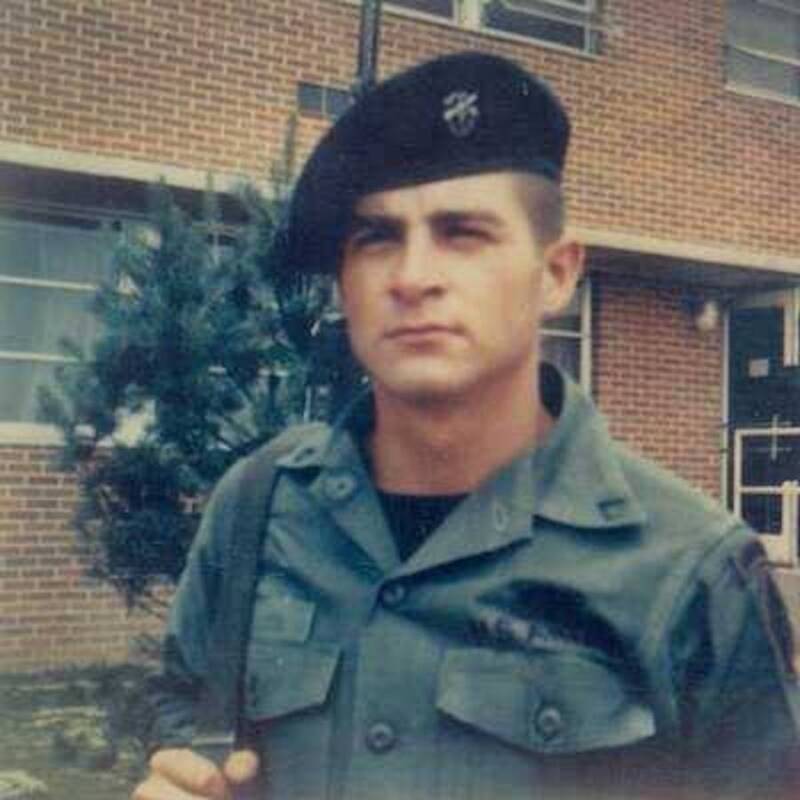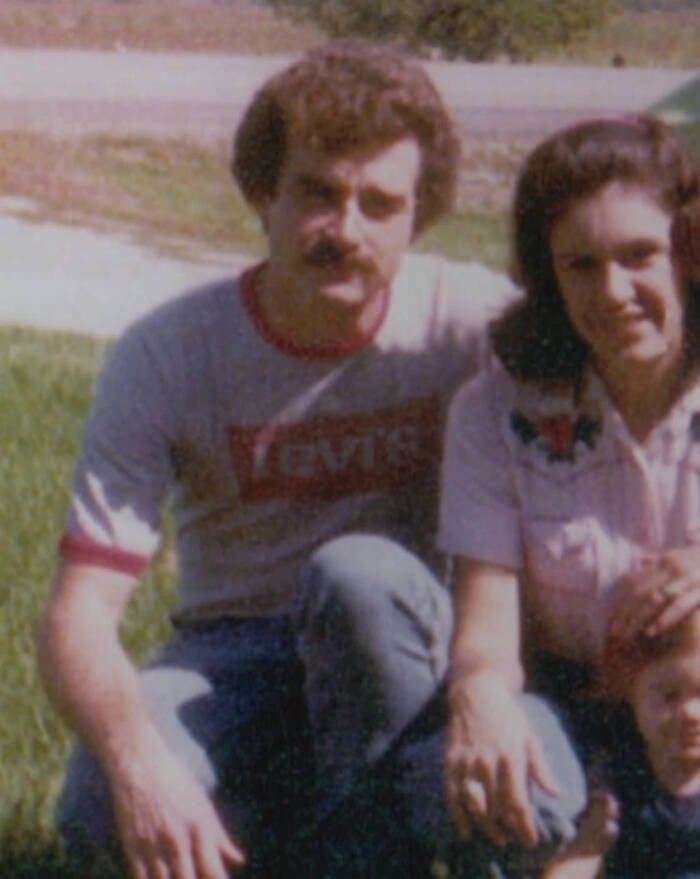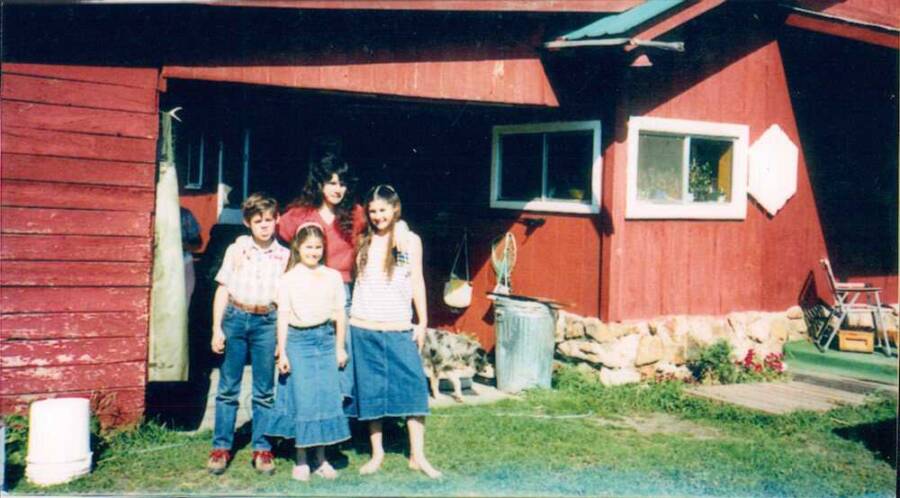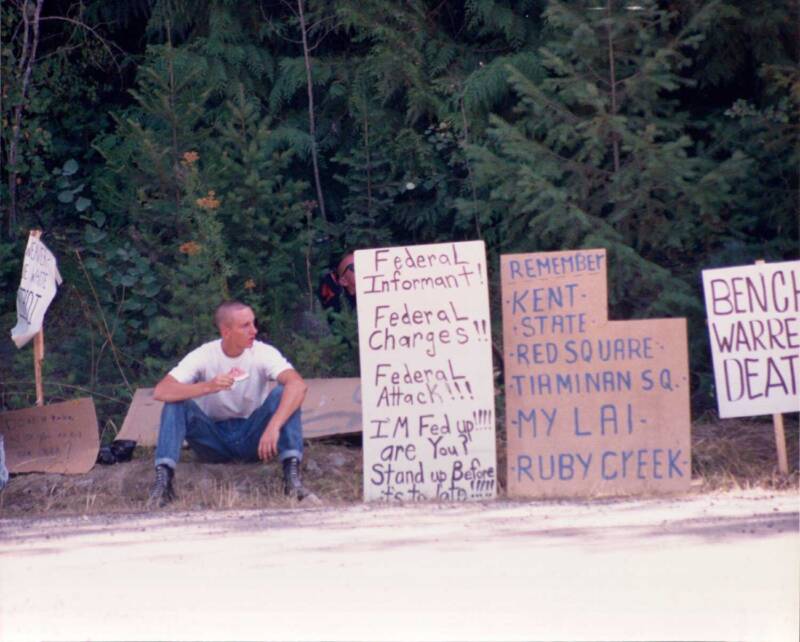After refusing to surrender to authorities following weapons charges in 1992, Randy Weaver engaged in an 11-day standoff with federal agents in Ruby Ridge, Idaho — an incident that left three dead and two injured.

Police PhotoRandy Weaver, the Weaver family patriarch at the center of the Ruby Ridge incident.
Randy Weaver became a household name in 1992 after federal agents swarmed his remote cabin in Ruby Ridge, Idaho. Weaver, alongside his family, believed that the apocalypse was near, that the U.S. government was becoming increasingly oppressive, and that a survivalist lifestyle was necessary. So, they had dedicated themselves to a life of seclusion.
A self-proclaimed white separatist, Randy Weaver regularly attended the annual Aryan Nations Congress in Idaho. One of his friends there ended up being a government informant — who set him up for a weapons charge in 1989. Though Weaver had the chance of becoming an informant as well, he refused to “snitch” on anyone and he was soon ordered to appear in court. He then missed a court date, likely due to a court official’s error.
Before long, Randy Weaver refused to leave his home at all, prompting federal agents to descend on his property in August 1992. The subsequent Ruby Ridge standoff would lead to the deaths of Weaver’s wife, his teenage son, his pet dog, and a Deputy U.S. Marshal. The incident sparked outrage across the United States — especially among fellow survivalists — and it also led to a sharp rise in anti-government movements in America.
Randy Weaver’s Early Life And Military Career

Sara WeaverRandy Weaver in the U.S. military.
Randall Claude Weaver was born on January 3, 1948, in Villisca, Iowa, to his parents, Clarence and Wilma Weaver. The couple were farmers who had three other children, and they were devoutly religious.
The Weaver family experimented with several Christian denominations, often attending different churches with their children.
Randy Weaver had a relatively normal childhood. He could often be found playing Little League or hanging out with friends. In 1966, he graduated high school and later attended Iowa Central Community College.
When he was only two years into his studies, Weaver dropped out to join the U.S. Army. He was stationed at Fort Bragg in North Carolina during the Vietnam War, and he was possibly trained as a combat engineer.
Then, in 1970, Weaver reconnected with Victoria “Vicki” Jordison, whom he had dated before joining the military, while visiting his hometown. Shortly after he was discharged from the military in 1971, Weaver married Jordison.

Find A GraveRandy Weaver with his wife Vicki.
The couple lived in Iowa and worked various jobs. At one point, Weaver attempted to go back to college, but dropped out and later secured work at a factory. Meanwhile, his wife worked as a secretary.
Together, the couple’s life seemed typical and mundane, but everything changed after Christian fundamentalism trickled into their lives.
The Weavers’ New Home In Idaho

Sara WeaverRandy Weaver’s wife Vicki and children (left to right): Samuel, Rachel, and Sara.
Randy Weaver’s religious views became increasingly extreme in the 1970s, after he picked up Hal Lindsey’s book The Late Great Planet Earth. This text discusses events in the Bible’s Old Testament and relates them to modern times — and also suggests that the rapture is coming soon.
Vicki Weaver was also deeply influenced by the book and later had visions in which God told her to take her husband and children to the West. Soon, the Weavers purchased a 20-acre property in northern Idaho, where they could live off the grid with their three children: Sara, Samuel (Sammy), and Rachel. A young man named Kevin Harris, who the family had taken in as a teenager, also moved into the Weavers’ new, secluded cabin in Ruby Ridge.
The Weavers were convinced that the apocalypse was near, and they wanted to find a place where they could live comfortably when that time came. They believed “the Scriptures” had sent them to Ruby Ridge, and they felt even more confident about their new home after they moved there in 1983.
Along with studying apocalyptic prophecies, the Weaver family also became increasingly concerned about government overreach. Before long, they began hoarding guns in case armed resistance was ever necessary.

Public DomainA sign outside Randy Weaver’s property in Ruby Ridge, Idaho.
Meanwhile, throughout the 1980s, Randy Weaver began to meet with local white supremacists at the Aryan Nations Congress in Idaho. Although he saw himself as a white “separatist” and not a white supremacist, Weaver made a number of friends at these events — one of whom was secretly a Bureau of Alcohol, Tobacco and Firearms (ATF) informant.
The informant, Kenneth Fadeley, thought that Weaver could potentially be a useful informant as well, so Fadeley asked him to sell him two sawed-off shotguns — and Weaver fatefully agreed. Later on, in June 1990, an ATF agent confronted Weaver about the illegal transaction and tried to pressure him into becoming an informant to avoid prosecution. But Weaver refused to “snitch” on anyone, believing that he had been entrapped.
“Mr. Weaver volunteered to violate federal firearms law,” Andrew Vita, the ATF’s deputy director, later said, according to The Spokesman-Review. John Magaw, the ATF’s director, added, “Mr. Weaver was not entrapped. He was not persuaded or coaxed by the government to sell illegal weapons. The idea to supply the weapons originated in Mr. Weaver’s own mind.”
This was just the beginning of what would become the Ruby Ridge incident.
Inside The Bloody Ruby Ridge Standoff

Public DomainSara Weaver, Kevin Harris, and Sammy Weaver outside of the Weaver home before the Ruby Ridge siege.
In January 1991, Randy Weaver was arraigned for the weapons charge. Weaver was told that his trial was in March, but it turned out to be in February (this was later blamed on a court official’s mistake). Whether or not Weaver would’ve showed up for the right date is unknown, but either way, there was soon a warrant out for his arrest after he failed to appear in court.
Despite the warrant, Weaver refused to surrender to the authorities. As it turned out, he had also been erroneously told that his family could lose their home if he lost his case, and that was the last thing they wanted. The Weavers made the fateful decision to hole up in their cabin in Ruby Ridge, Idaho. There, ATF agents soon began surveilling the property.
According to the Weavers, they believed a law enforcement officer would show up at their door to discuss the situation. They never suspected that federal agents would surround their property in preparation for a siege.
“You know,” Randy Weaver told his children, according to PBS, “if the Sheriff would come up and knock on my door, I’d invite him in for coffee, and we’d sit down and have a discussion.”
However, that day would never come. On August 21, 1992, Deputy U.S. Marshals were approaching the property when the Weaver family’s dog, Striker, noticed them. Striker began barking and chasing the Marshals, prompting one to fatally shoot the dog so it wouldn’t ruin the operation.
This prompted Randy Weaver’s 14-year-old son, Samuel “Sammy” Weaver, to fire at the federal agents, leading to a gunfight that would result in Sammy’s death and the death of Deputy U.S. Marshal William F. Degan. In the aftermath, the rest of the Weavers and their family friend Kevin Harris barricaded themselves in the cabin, shocked by what had transpired.
By the next day, federal agents had swarmed the mountainside and essentially transformed Ruby Ridge into a small military encampment. The FBI had sent in dozens of snipers and assault commandos, and hundreds of federal agents and state police officers prepared for what they thought was going to be a lengthy battle with a powerful anti-government group. Meanwhile, a group of protestors also gathered in support of the Weavers.
Back at the cabin, Randy Weaver left to go visit his son’s body, but federal agents shot him, wounding him, before he was able to do so. When his wife Vicki opened the door of the cabin to let him back inside, federal agents fatally shot her while she held her newborn baby, Elisheba, in her arms. In the midst of all the gunfire, Harris was also wounded.
Ultimately, the Ruby Ridge standoff lasted for 11 days and ended only after Randy Weaver and Kevin Harris surrendered to authorities on August 31st.
The Fate Of Randy Weaver

Public DomainRandy Weaver walking down the mountain with FBI agents after his surrender.
After the Ruby Ridge incident, Randy Weaver and Kevin Harris were indicted on 10 charges, two of which were thrown out before the jury began deliberating about their case. The most serious charge was murder, and Weaver and Harris were put on trial for the death of Marshal Degan.
But in the end, Harris was acquitted on all charges. And Weaver was acquitted on all charges related to the Ruby Ridge incident. Weaver was only convicted of failing to appear at the trial for his original weapons charge and violating conditions of his release before that trial. Ultimately, Weaver was sentenced to 18 months in prison for those offenses.
In the aftermath, the incident sparked massive debate among the American public about government overreach. Many in the public were angry at how the federal agents handled the situation, and some even called for the arrest of several authority figures who had been involved in the siege.
The public outcry about the Ruby Ridge standoff — and the infamous Waco siege that happened soon after in 1993 — led to a rise in anti-government movements across America. And disturbingly, both events inspired domestic terrorist Timothy McVeigh to carry out the Oklahoma City bombing in 1995.

Public DomainA protest supporting Randy Weaver’s family during the Ruby Ridge siege.
As for Randy Weaver, he filed a wrongful death lawsuit after his release from jail due to the loss of his wife and son. Ultimately, the government agreed to pay the surviving Weaver family members $3.1 million. Randy Weaver personally received $100,000 and his three daughters received $1 million each. (Meanwhile, Harris received $380,000 in a separate lawsuit.)
In the following years, Randy Weaver appeared to express regret for his role in the events that led up to the Ruby Ridge siege, saying that if he could’ve done things over again, he would’ve appeared in court for the original weapons charge. He and his daughter Sara eventually wrote a book titled The Federal Siege at Ruby Ridge: In Our Own Words.
Weaver also married Linda Gross, a secretary from Iowa. Meanwhile, his daughters — Sara, Rachel, and Elisheba — all settled in Montana.
On May 11, 2022, Randy Weaver died at age 74. His daughter Sara announced his death, but she did not say how he died. Unlike his late wife who professed deeply religious views before her demise, Weaver seemed happy to let religion go after Ruby Ridge, according to The Spokesman-Review.
“I ain’t afraid of dying no more,” he said in 2007. “I’m curious about the afterlife. And I’m an atheist.”
After reading about Randy Weaver, dive into nine true stories of life inside famous cults. Then, read about Operation Red Dog, the failed white supremacist plot to take over the Dominican government.





